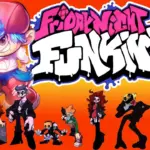Demon Slayer: Kimetsu no Yaiba Manga has taken the anime and manga world by storm, becoming a cultural phenomenon that has redefined the shounen genre. This article explores how Demon Slayer has revolutionized the industry, captivating audiences worldwide with its unique blend of storytelling, artistry, and emotional depth.
The Rise of a New Shounen Powerhouse
When Demon Slayer first appeared in Weekly Shonen Jump in 2016, few could have predicted its meteoric rise to become one of the best-selling manga series of all time. The anime adaptation, which premiered in 2019, further catapulted the franchise to unprecedented heights of popularity.
What sets Demon Slayer apart from its shounen predecessors is its ability to balance intense action sequences with deeply emotional storytelling. The series follows Tanjiro Kamado, a young boy who becomes a demon slayer after his family is slaughtered and his sister Nezuko is turned into a demon. This premise immediately hooks readers and viewers, setting the stage for a journey filled with heart-wrenching moments and thrilling battles.
Elevating Animation to New Heights
One of the most striking aspects of Demon Slayer’s success is its breathtaking animation. Studio Ufotable, known for their work on the Fate series, has pushed the boundaries of what’s possible in anime production. The fluid combat sequences, intricate character designs, and stunning visual effects have set a new standard for the industry.
The “breathing techniques” used by the demon slayers are particularly noteworthy, with each style represented by unique visual elements that blend traditional Japanese art with modern animation techniques. This innovative approach to depicting special moves has inspired countless fan recreations and cosplays, further fueling the series’ popularity.
Breaking Box Office Records
The success of Demon Slayer extended beyond television screens and manga pages. The 2020 film “Demon Slayer: Mugen Train” became the highest-grossing anime film of all time, surpassing Studio Ghibli’s “Spirited Away.” This achievement not only solidified Demon Slayer’s place in anime history but also demonstrated the growing global appeal of Japanese animation.
Character Development and Emotional Resonance
While stunning visuals certainly contribute to Demon Slayer’s appeal, it’s the series’ rich character development that truly sets it apart. Each character, from the main cast to supporting roles, is given depth and backstory that resonates with audiences. Tanjiro’s unwavering determination, Nezuko’s struggle with her demon nature, and the complex motivations of the Hashira all contribute to a narrative tapestry that keeps fans invested.
The series also tackles themes of family, sacrifice, and the nature of humanity with a nuance rarely seen in shounen manga. These elements elevate Demon Slayer beyond typical action-adventure fare, appealing to a broader audience and contributing to its crossover success.
A New Generation of Villains
Demon Slayer’s antagonists are equally well-crafted, with the demon hierarchy led by Muzan Kibutsuji presenting a formidable and multifaceted threat. The series subverts expectations by humanizing many of its villains, exploring their tragic backstories and the circumstances that led them to become demons. This approach adds layers of complexity to the narrative, challenging readers to question the nature of good and evil.
Impact on the Manga and Anime Industry
The success of Demon Slayer has had far-reaching effects on the manga and anime industry. Its popularity has led to increased interest in the shounen genre as a whole, with publishers and studios seeking out new properties that can capture the same magic. The series has also influenced marketing and merchandising strategies, with Demon Slayer products ranging from traditional figurines to collaborations with major brands.
Moreover, Demon Slayer’s success has highlighted the importance of high-quality anime adaptations. The synergy between the manga and anime versions of the story has created a feedback loop of popularity, with each medium driving interest in the other. This has led to increased investment in anime production, as studios recognize the potential for well-executed adaptations to become global phenomena.
Cultural Impact and Global Recognition
Beyond its commercial success, Demon Slayer has made significant cultural contributions. The series has introduced elements of Japanese folklore and history to a global audience, sparking interest in traditional Japanese culture. Terms like “Hashira” and “Nichirin blades” have entered the lexicon of anime fans worldwide, while the series’ depiction of early 20th century Japan has piqued curiosity about the country’s past.
The franchise’s popularity has also led to collaborations with various industries, from themed cafes and escape rooms to special edition products. This widespread presence has cemented Demon Slayer’s status as a cultural touchstone, transcending its origins as a manga series to become a global brand.
The Future of Shounen Manga and Anime
As Demon Slayer continues to captivate audiences, its influence on future shounen works is undeniable. The series has raised the bar for storytelling, character development, and visual presentation, challenging creators to push the boundaries of the genre. Future shounen titles are likely to draw inspiration from Demon Slayer’s successful formula, potentially leading to a new wave of emotionally resonant action series.
However, the true legacy of Demon Slayer may lie in its ability to bridge cultural gaps and bring anime to mainstream audiences. As the series continues to gain recognition worldwide, it opens doors for other manga and anime properties to find similar success on the global stage.
Conclusion
Demon Slayer: kimetsunoyaiba.org has undoubtedly revolutionized the shounen anime and manga landscape. Through its compelling storytelling, unforgettable characters, and stunning visual presentation, the series has set new standards for the industry and captured the hearts of millions of fans worldwide. As we look to the future of manga and anime, the impact of Demon Slayer will continue to be felt, inspiring creators and delighting audiences for years to come.
We’d love to hear from you! How has Demon Slayer impacted your experience with shounen anime and manga? Share your thoughts and favorite moments from the series in the comments below!































